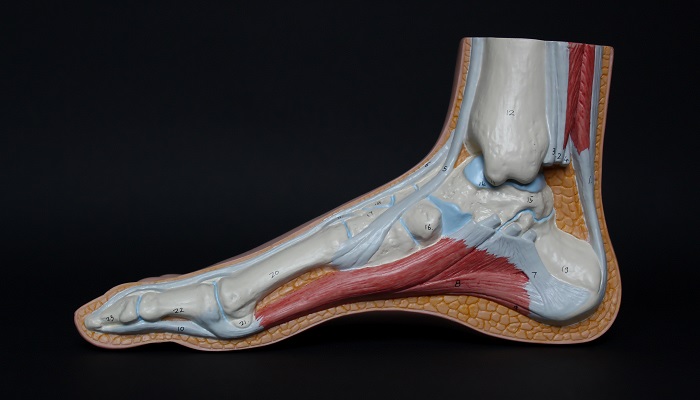Are you experiencing ongoing pain or stiffness in your neck, back, head, shoulders, or arms? Have you started to notice strains and aches when engaging in activities that used to be easy for you before? If so, it might be time to consider a chiropractic visit. Chiropractic care can help provide relief from painful symptoms and promote overall joint health – but how do you know it’s the right solution for your needs? Read on for 6 obvious signs that a chiropractor may be able to help.
1. Persistent neck, back, or shoulder pain
Persistent neck, back, or shoulder pain can truly be a living nightmare for the individuals who experience it. It can affect nearly every aspect of daily life and hinder activities that once brought joy and satisfaction. The constant discomfort and pain can lead to a decrease in quality of life, often resulting in depression and anxiety.
It is crucial to seek medical attention if this type of pain continues for an extended period of time. As per the Finesse Chiropractic experts, seeking help from a medical professional can provide the necessary tools and treatment to manage and alleviate the pain, leading to a more comfortable and fulfilling life. Don’t let the pain control your life – take action today and seek out the help you deserve.
2. Loss of range of motion in a joint
Our joints are critical to many of our daily activities. They allow us to move, stretch, and reach. However, when we lose the range of motion in a joint, it can make even the simplest tasks seem impossible. This loss can be caused by injury, disease, or even just aging. It is important to address the issue and work on restoring the lost range of motion.
Ignoring the problem can lead to further complications down the line, such as muscle soreness and stiffness. Physical therapy, stretches, and proper nutrition can all aid in the progression toward regaining the range of motion in the joint. By understanding and committing to this process, we can help our bodies function at their best.
3. Frequent headaches
Headaches are both a common and frustrating occurrence for many people. Whether they are caused by stress, dehydration, lack of sleep, or any number of other reasons, their effects can be debilitating. Frequent headaches can affect one’s ability to focus, work, or enjoy everyday activities.
It’s important to take the time to determine the root cause of your headaches and to establish healthy lifestyle habits that can help prevent them. From maintaining a consistent sleep schedule to staying hydrated and reducing stress, there are many ways to combat chronic headaches and regain control of your day-to-day life.
4. Numbness or tingling in the extremities
Have you ever experienced that pins and needles sensation in your hands or feet? Maybe your fingers or toes felt numb or tingly, almost as if they fell asleep. This is a common condition called paresthesia, and it can be quite unsettling, not to mention uncomfortable. While the sensation is usually temporary and harmless, it’s important to know when it might be a sign of a more serious underlying condition.
Understanding the causes and symptoms of numbness or tingling in the extremities can empower you to seek the proper medical attention if needed and provide peace of mind knowing that you’re taking care of your health.
5. Muscle spasms and cramps
Muscle spasms and cramps are undoubtedly some of the most uncomfortable conditions one can experience. They are involuntary contractions that occur suddenly and can result in sharp, intense pain that lasts for minutes or even hours. While they are common in the legs, they can occur in any part of the body. Muscle spasms and cramps can be caused by dehydration, over-exertion, electrolyte imbalances, or even certain medications.
If left untreated, they can lead to muscle damage or injury. Fortunately, there are several ways to alleviate the pain and prevent future episodes, such as staying hydrated, stretching before exercise, and consuming foods that are rich in electrolytes. With proper care and attention to one’s body, muscle spasms and cramps can be effectively managed, allowing for a pain-free, active lifestyle.

6. Difficulty walking or standing
Walking is an essential activity in our daily lives, but sometimes it becomes a real pain. For those who struggle with standing or walking for long periods of time, simple tasks such as grocery shopping or running errands can become a daunting experience. You may feel like your feet and legs are on fire, or you may find that your muscles tire too quickly. Difficulty standing or walking can be caused by a variety of factors, including arthritis, plantar fasciitis, nerve compression, or even just wearing the wrong footwear.
Regardless of the cause, it’s important to take steps to alleviate the issue and prevent further complications. Seeking advice from your healthcare provider, doing exercises, and wearing comfortable shoes can help you to overcome this obstacle and make walking around a more enjoyable and comfortable experience.
The body is an amazing and complex machine that, when functioning properly, allows us to live our lives to the fullest potential. However, when it suffers from persistent pain or movement limitations, it can be frustrating and impede your activities of daily living. If you are suffering from chronic neck, back, or shoulder pain, loss of range of motion in a joint, frequent headaches, numbness or tingling in the extremities, muscle spasms and cramps, or difficulty walking or standing for long periods of time then it’s time to consider seeking treatment from a qualified medical provider.


















